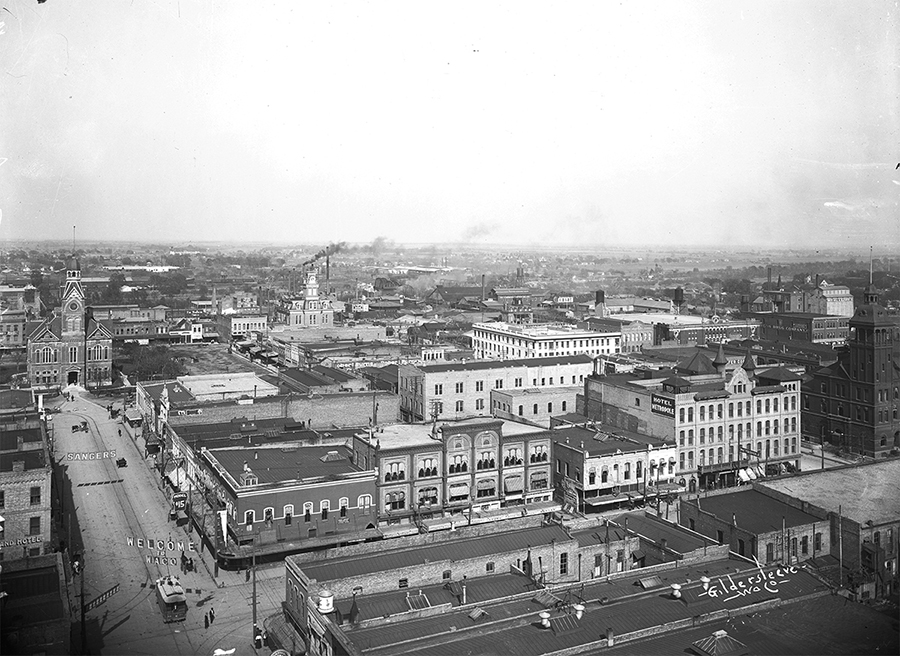Meet John Wilson, originally from Ohio and Director of The Texas Collection, in our last staff post giving you a peek into the day-to-day work of The Texas Collection.

When I arrive at work each morning, I am never certain what I will discover, learn, and see. The suspense of unknown waiting treasures provides great enjoyment for me as director of The Texas Collection. I have been in this role a little over three years, and it is an unusual day when I do not receive an email from a donor, a phone call asking a Texas-related research question, or an inquiry from a faculty colleague about some aspect of Baylor’s past.
My day generally begins with reviewing after-hours emails and telephone calls. Once those inquiries have been answered, I try to speak with each one of the staff, then say hello and ask for collection processing updates from our graduate students, and finally try to speak with each of our undergraduate student workers. There are always interesting and new finds from the work our students are accomplishing. These finds might include identifying an early Republic of Texas document with Sam Houston’s signature or discovering that we own an original Tom Lea drawing.

I then begin work on two or three pressing projects. This involves multitasking throughout the day. My first project of the day might involve planning or maintenance concerns dealing with Old Baylor in Independence. Once or sometimes twice a month, I travel to Independence to walk the grounds of Windmill Hill or inspect the columns at Academy Hill. On these trips, I also visit a Baylor graduate or donor and check in with Peggy Ward, who manages the day-to-day operations in Independence and works closely with our community partners, the Independence Historical Society.
In addition to leading and managing The Texas Collection, I work closely with two parts of our extensive holdings, our map collection totaling nearly 17,000 items and photograph collection of more than 1.4 million images. I might review a print or online dealer catalog for both maps and photographs.

Another project that might be pressing for my attention is planning a lecture by a guest speaker such as the Honorable Tom Phillips. This type of special event and all of its many details are vitally important to the outstanding reputation and continued outreach necessary to having a vibrant and active special collection. Our speakers have researched in The Texas Collection and connect with our resources and the audience, particularly our students.
On a daily basis, I work with donors to acquire new archival collections that will enhance and strengthen our holdings. We are always searching for early Texas collections from the Spanish Colonial period, the Mexican period, and the early Republic of Texas period. We are also interested in Waco history, the Civil War, Baylor-related items, and of course, print materials dealing with Texas. I am closely involved with the budget, endowments, and fundraising.
One of the most interesting parts of my job is talking with people about The Texas Collection. These days, we talk with and reach out to more people than ever before due to our social media outlets. Flickr, Facebook and this blog are followed and read by fans across Texas and around the world.
I think the most rewarding part of my job is working with Baylor students. This could involve teaching a class, collaborating on a project, or advising students on studying abroad in Italy (another one of my interests). The students are the reason I have stayed at Baylor for 26 years. Our students are smart, talented, and willing to work hard for their Baylor degrees. I am fortunate to work with a great staff and exceptional students.
The Texas Collection turned 90 this year! But even though we’ve been at Baylor for so long, we realize people aren’t quite sure what goes on in a special collections library and archives. So over the course of 2013, we have been featuring staff posts about our work at The Texas Collection. See other posts in the series here. We hope you’ve enjoyed learning more about our work.
























